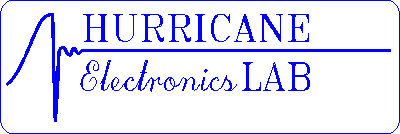 Application Note #103
Application Note #103HL-8105:
RIPPLE REDUCTION TECHNIQUE.
INTRODUCTION:
Switching regulators provide many advantages over linear power supplies, but in some
applications the relatively higher output ripple prevents thier use. This application
note describes a filtering technique that can greatly reduce the output ripple of a
switching power supply, and is applicable to step-up (boost), step-down (buck), or
flyback (buck-boost) circuits.

By adding L2 and C3 to the output of a switching power supply, the output ripple is reduced by
the attenuation of the filter formed by L2 and C3.
Where: ZC3 = 1/SC3 + ESRC3 = 1/2
ZL2 = 2
L2 = inductance of L2 in Henries
f = ripple feq.
C3 = capacitance of C3 in Farads
ESRC3 = Equivalent series resistance of C3 in Ohms
At 70 KHz a 3uH inductor (HL-8105), has an impedance,
ZL, of 2 x 3.14 x 70,000 x .000003 = 1.318 ohms.
A 1000 uF capacitor has an impedance,
ZC, of 1/2 x 3.14 x 70,000 x .001 = .0022 ohms
However, its ESR is probably .05 ohms. (Check manufacturers data sheet).
Now if the above inductor and capacitor are used to form a filter which is added to a switching supply with output ripple of 1 Vpp the ripple at the output of the filter will be = 1 Vpp.(.052/(1.318 + .0522)) = 38 mVpp.
Phone: (435) 635-2003 ** Fax: (435) 635-2495
331 N. 2260 W. ** Hurricane Industrial Park ** Hurricane, Utah 84737